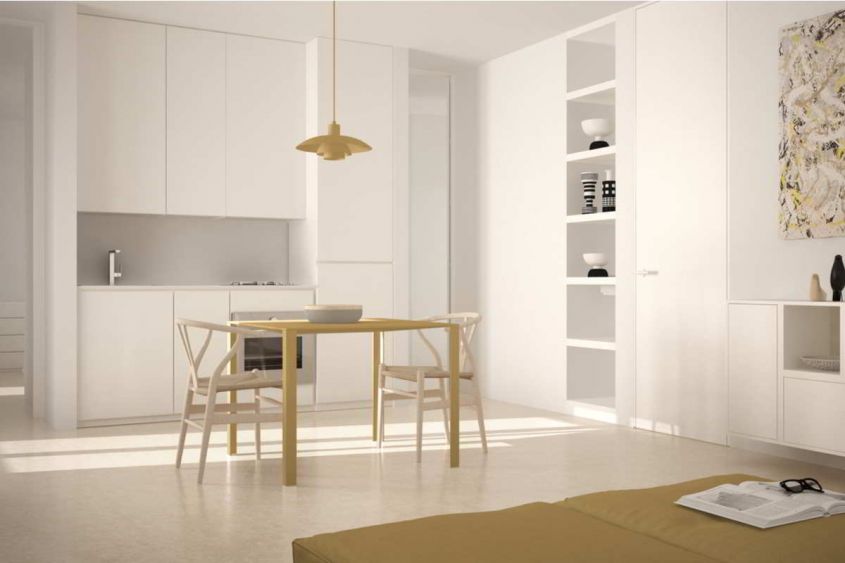When we talk about epoxy resin as a material to renew one’s surfaces, we must distinguish between coatings and resin floors. If the thickness of the epoxy is less than 2 mm, he’s called epoxy coating and if the thickness of the epoxy is greater than 2 mm, he’s called epoxy floor. Epoxy flooring is also known as resinous flooring. Epoxy systems consist of a combination of polymers, resins and hardening materials.
THE epoxy floor coverings they are commonly used for commercial and industrial flooring, but also for indoor environments in family apartments. They are normally applied to concrete floors to provide a high performance, smooth and durable surface that can last many years and withstand heavy loads. Many industrial sites, warehouses and commercial buildings rely on this choice to maintain clean and safe conditions for workers, equipment and inventory.
Preparation of the epoxy floor coating
A epoxy coating requires a clean, slightly porous surface to adhere properly. Epoxy may not bond to sealed or polished concrete. The concrete must also be fully cured. Before applying the epoxy floor coating, it is important to patch and repair all major cracks and chips on the concrete surface and remove all grease to help it adhere to the surface.
If the concrete is old, test the surface for the actual applicability of the epoxy. To check its sealing power, pour a small amount of water on the floor. It should absorb. If water drips onto the surface instead of submerging, the surface may not be suitable for an epoxy coating.
Before applying an epoxy coating, make sure the temperature is suitable and follow all manufacturer recommendations. Unfavorable temperatures can cause the formation of unsightly bubbles which could compromise the durability of the material over the years. Epoxy is a two-part liquid that mixes before application. Once the product is mixed, you have a limited time to apply the epoxy coating before it starts to harden.
Surface preparation with epoxy primers
Depending on the product applied, it may be necessary apply an epoxy primer and a top coat, the important thing is that top quality materials such as those proposed by Gobbetto, to guarantee a final quality in the implementation.
The primer is applied just like paint and is allowed to sit for several hours before the actual epoxy can be applied. To apply the primer, cover the floor with a thin layer of water, then spread the primer in a thin layer all over the floor. Let the primer dry, then apply a second coat. The finisher is applied in the same way as the primer but without the water layer.
Implementation and finishing of the flooring process
Prepared the surface with the primer, it is passed when applying the epoxy filler. It must be said that the epoxy putty can also be applied before applying the primer, but the consolidated protocol foresees it as a second phase. If fine cracks are visible, they must be widened with the help of a diamond disc before filling them with epoxy mortar.
Application of the first coat of epoxy paint. Being the combination of two materials, read the manufacturer’s instructions written on the product and mix the components with an electric mixer for at least two minutes. Use the right quality roller for applying the epoxy paint as poor quality rollers may start shading. After applying the first coat, wait 24 hours, then check the floor. If cracks or holes are still visible, fill it with epoxy putty and let it dry for a day.
Apply the final coat. Before applying the final coat, make sure all cracks and holes have been filled in and all dust has been removed. From the moment of mixing the components, the material should be applied in forty minutes; otherwise it begins to harden. Apply the polish if you don’t want a matte finish.


